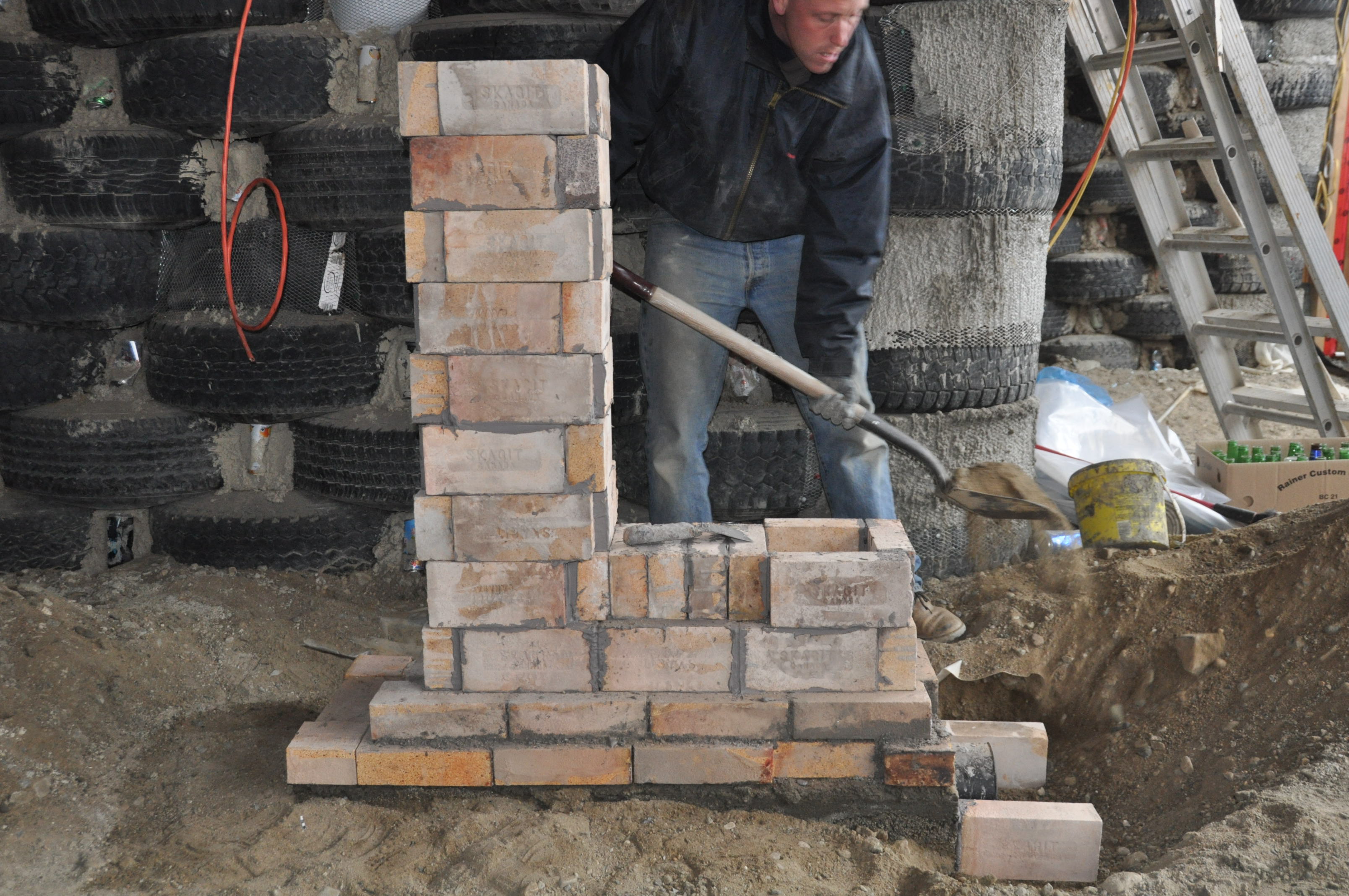
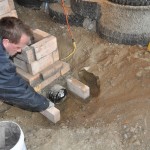 This morning we tidied up a bit around the stove. We placed bricks around the ash clean out to protect the pipe from gravel and cob.
This morning we tidied up a bit around the stove. We placed bricks around the ash clean out to protect the pipe from gravel and cob.
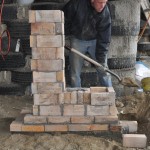 After that we shoveled and tamped gravel around the foundation to bring the unfinished floor level to the bottom of the stove core.
After that we shoveled and tamped gravel around the foundation to bring the unfinished floor level to the bottom of the stove core.
The next step in our rocket mass heater project was to pack approximately 2″ of clay slip mixed with perlite around the core of the stove. The purpose of this layer is insulation … you want to keep the core of the stove hot so that combustion is efficient. Increased efficiency serves two purposes; combustion is more complete so less carbon monoxide is produced, and a hot burn pushes the gas through the stove better.
Anyway … after a bit of research I figured out what clay slip is. As stated in the Natural Plaster Book:
… fill a tub … one-third with water, add screened soil, and mix thoroughly … Clay will be suspended in the water on top … when the clay-water mixture is as thick as heavy cream, it is time to start “harvesting” the clay slip. Scoop the clay-water material …
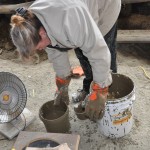 This was easy enough and late this morning Sandra was busy harvesting clay slip. Once we had the slip we mixed it with the perlite. We started trying to make a 1:9 mix of clay slip to perlite. This is the ratio recommended in The Rocket Mass Heater book by Ianto Evans. We quickly found that the mix was too dry … we continued to add clay slip until the mixture started to stick together.
This was easy enough and late this morning Sandra was busy harvesting clay slip. Once we had the slip we mixed it with the perlite. We started trying to make a 1:9 mix of clay slip to perlite. This is the ratio recommended in The Rocket Mass Heater book by Ianto Evans. We quickly found that the mix was too dry … we continued to add clay slip until the mixture started to stick together. 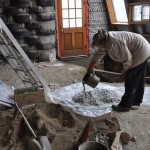 I am not sure what our final ratio of ingredients was, but we added slip until we could form the mixture to the heater without it crumbling off. We found placing this layer hard; it crumbled easily as it was placed, and as it hardened it cracked and pulled away from the surface of the heater. I think the sooner you can cover this layer the better.
I am not sure what our final ratio of ingredients was, but we added slip until we could form the mixture to the heater without it crumbling off. We found placing this layer hard; it crumbled easily as it was placed, and as it hardened it cracked and pulled away from the surface of the heater. I think the sooner you can cover this layer the better.
After lunch we came back out and started on the next layer for the stove; six inches of cob with no tensile fibres (straw or wool in our case). This mix of clay and sand is called ‘thermal cob’ by some, it is better at storing heat due to the lack of fibres that might burn out of the mix (effectively acting as insulation) and slow down the heating of the bench. We built the thermal cob up around the stove to a height of about 4 inches and hit our first real snag of the day; it was difficult to add more cob as its weight was causing the initial layers to slump. No Problem we thought … we have a stove! We’ll just fire the rocket mass heater and bake the cob.
Surprisingly, this plan worked fairly well. We uncovered the closest skylight, opened all the doors and lit the stove. It took a few hours to get the stove warm, but once it warmed up you could watch the steam rising off the cob. I did have to open the rest of the skylights to avoid getting gassed … other than that no real problems. We were able to put some more cob on late in the afternoon and kept the stove lit until after dinner to help dry it out.
Tomorrow we will try to finish this thermal cob layer, and see if we can dig some clay outside. Hopefully the frost is not deep!
Here are some pictures …
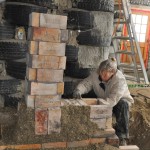
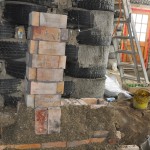
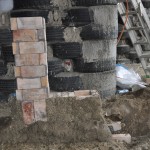
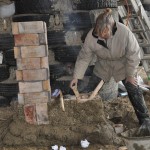
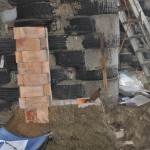
Hello, nice project you have there, you won’t regret it! About the clay slip, the ratio you indicated is corrected, and it’s not supposed to stick together. Instead (well, what I did…), the clay slip is to fill space between the stove and the COB that you put aroud, just like this picture http://www.ecologie-pratique.org/mediagallery/media.php?f=0&sort=0&s=20081210222326416 (which is not mine). On this picture, it’s perlite instead of clay slip.
Don’t worry about what you did, it will just be less insulated.
Keep posting your project, it’s interesting!
Yvan
Hi
Thanks for the picture and comments …
Unfortunately its too late and I am not taking it apart! The surrounding cob has now dried and is quite solid. As you say, it will have a lower insulation value.
I’ve been posting to a construction forum for rocket mass stoves and yours is now the second explanation of making a pocket for the insulation. It makes a lot of sense.
I take it you already have a RMH? How do you like it?
Hello,
We simply love it! On winter days, my four kids usually play outside, when they get cold, they just get in, sit on the bench a few minutes, afterwards they are ok to play outside again.
We also appreciate it for the fact that we don’t have to maintain the house at a temperature as high as before, to feel confortable.
Here, is a picture of my rocket mass heater. We’ve built it two years ago.
Yvan